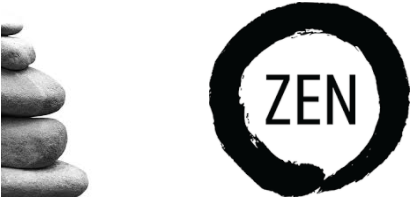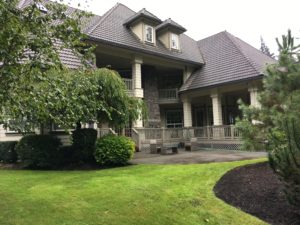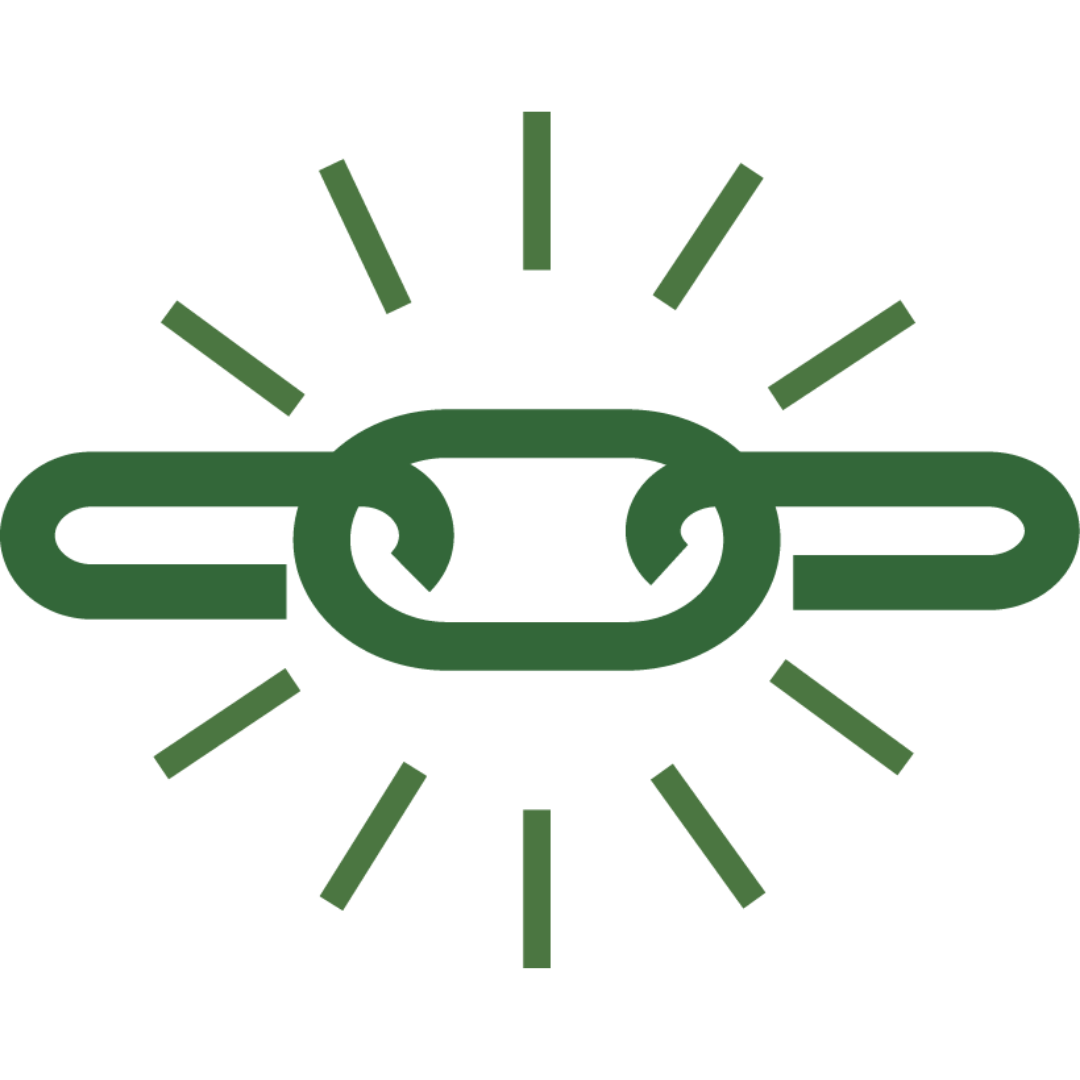My experience – as a Bulletproof Coach – at 40 Years of Zen

I’m back from Bulletproof’s 40 Years of Zen training and people are asking me questions like:
- What is 40 Years of Zen?
- What was it like?
- How do you feel after?
- Was it worth it?
If you want to find the official word on 40 Years of Zen, you can simply visit their website here.
In this article I’m sharing my experience and my perspective on the 40 Years of Zen training. I’ll dive into the where, what, why and how of it all – from my POV.
Where does it take place?

It’s outside of Seattle in Kent, Washington in a big beautiful mansion that lies in the middle of country roads and ranches.
Where did I stay?
Unfortunately, despite the high price tag that comes along with the training, I didn’t get to stay in that beautiful house. The recommended option was to stay at a hotel in Kent that was just under 10 miles away from the house. Instead, I decided to save some money and luckily found an Airbnb just a mile away – which made for a good way to stretch my legs in the mornings when I left my 40 Years of Zen training and again in the evenings when I returned to my Airbnb.
What happened after I signed up?
After signing up for 40 Years of Zen, I spoke with a representative there on May 9th and we scheduled a week I would attend: September 11th through the 15th. I chose this date because I was already planning to go to the Ancestral Health Symposium in Seattle the weekend prior. Two birds. One stone. Or so I hoped…
I was set up with an online account and directed to fill out an online form that consisted of a variety of questions around where I would like to focus my efforts during my training. I ended up explaining how I would like to improve my Self perception, Emotional self awareness, Self actualization, Integrity, Motivation, Remove / Diminish Emotional Blocks and unconscious dysfunctional habits, Goal and purpose clarity and manifestation, Focus, Task Flexibility, Memory, Meditate more deeply, Empathy, Self fulfillment, Interpersonal relationships, Intuition, Insight, Problem solving, Emotional awareness, Impulse control, Bigger vision, Better insight, Resilience, Flexibility, Adaptability, Influence, Insight, Understanding, Rapport, Increase my overall awareness of people and situations around me. Whoa, I have a lot of work to do!
Although I submitted this, I never heard any mention of it after…so I’m really not sure what they did with it – if anything at all. I put it on a list of follow-up questions for them.
On August 1st I was told that unfortunately the week I had booked wasn’t available due to a “scheduling conflict” and that “because you were a prizewinner and so didn’t book through the website, the system didn’t pick this up”. Although that’s true – I didn’t book on their website – I did book with a human being who you may have thought would know the schedule better than the computer; or, at least, be able to look at the schedule in the computer to see that the week was not available? Hmm…
I had scheduled my training on May 9th. May 9th! THREE FULL MONTHS had passed before they told me that I had to reschedule. WTF?! Was this part of my zen training? Fortunately I had yet to book my flights and lodging so it wasn’t that big of a deal. But it did mean two separate trips to Seattle. I didn’t want to delay – so I booked for the following week beginning my training on September 18th.
Closer to my training I was given a form with questions around what I wanted to get out of 40 Years of Zen, why that’s important, how I would expect to feel making the changes, and what’s getting in the way. I answered these questions and read over them multiple times before the training started. I was asked to bring the questions and my answers to the training. I did. However, nobody ever asked about them or brought them up during the training. I suppose this was simply to get us to start thinking about what I wanted to get out of 40 Years of Zen on a deeper level so that I would be better prepared.
When did I do the 40 Years of Zen training?
The training took place from Monday, September 18th, through Friday, September 22nd. There were five full days of training starting at 9am and ending at 6:30pm.

It was stereotypical Seattle weather that week with a lot rain and cool temperatures. So it seemed to be a good week to be cooped up indoors!
What did I do at 40 Years of Zen?
I didn’t have much of an idea as to what to expect. Upon my arrival at 9am I was greeted by one of the workers and taken to the kitchen table where I met the three other people participating in the training. I was served a Bulletproof decaf coffee, filled out some paperwork, signed some forms (that hopefully don’t allow me to share this article with you!), and I then soon met the three people who were running the training. One was the guy in charge of operations. Another was the coach. And the third was an assistant who helped out with everything – and gave us a tour of the house. It’s a BIG house so, rather than go into the details, I’ll share some of the highlights where I spent a majority of my time…
The kitchen. That’s where the chef came in to prepare all of my Bulletproof meals. They were delicious!
The garage. This is the future location for all of the pods where people will do their neurofeedback training. At this moment it was in development with half-constructed pods filling most of the space that might otherwise fit about four cars. For my use there were a couple Bulletproof Vibes and an inversion table. And I took advantage of both during the week!
The debrief room. This room looked out over the beautiful gardens and landscaping in the front of the house and is where most of my coaching and training happened – before and after my neurofeedback sessions.
The neurofeedback rooms. This is where the magic happened. There were two rooms each with two chairs where I did most of my brain training. There was also a room with two more machines where I do some slightly different (called “cap”) training.
Orientation. I already discussed the initial greetings and tour of the premises. I then sat in the room adjacent to the kitchen where we were asked to answer a few questions – including:
- What do you want to get out of 40 Years of Zen?
- Do you have a meditation practice?
I don’t clearly remember my answers to these questions but it was something along the lines of, “I’m not quite sure what to expect but I’m looking to better myself and get more clarity around my direction in life. I meditate daily using guided meditations.”
Next they presented the basics of neurofeedback and how it works. You’re free to google and do your own research and I’ll simply offer the wikipedia definition:
Neurofeedback (NFB), also called neurotherapy or neurobiofeedback, is a type of biofeedback that uses real-time displays of brain activity—most commonly electroencephalography (EEG), to teach self-regulation of brain function.
(But, in my case, at 40 Years of Zen, audio feedback was the primary method used to train the brain.)
Breathing, Coherence and HRV
This was something that was a nice surprise for me. I have been using the Emwave2 device for over a year to train my breath, HRV and coherence. So it was good to get some official training and feedback. What was really cool was that on Monday morning I measured my optimal breath based on a chest strap and a basic ECG.
Basic Heart Rate Variability (HRV) is the change in time between successive heartbeats. HRV has been shown to be reduced in individuals reporting to worry more.
Coherence is the state when the heart, mind and emotions are in energetic alignment and cooperation. It is a state that builds resiliency – personal energy is accumulated, not wasted – leaving more energy to manifest intentions and harmonious outcomes.
Based on this I was told that my optimal breath rate was 4.5 breaths per minute – and later told that optimally I’ll breathe in for 6 seconds and out for 8 seconds. I used an app called Breathe + as a pacer. And I used Emwave to track my heart rate, HRV and coherence.
It was cool to see because, with the guidance of a trainer, I was able to much more easily get to a steady pace of relaxed breathing – which meant for a high level of coherence and very low stress.
Over the week I did breathwork every day using Emwave. I also did a few brief meditations before some of my debrief sessions.
To kick off one of the meetings, I learned how to “hack” coherence and pacing by taking my own pulse. To accomplish this, I simply put my fingers on my wrists and counted the pulses while breathing: inhaling for 6 pulses and exhaling for 6 pulses. What’s interesting is that I could feel my blood flow speed up while inhaling and then slow back down on the exhale.
Neurofeedback
Before diving directly into the neurofeedback, I sat in a chair with a helmet-like device on my head and stared at a wall while while the device measured my qEEG. This was my brain map.
When I reviewed my brain map on Monday afternoon, I was asked if I had trouble with focus. I didn’t think so. But apparently my brain map showed otherwise. Lack of focus and attention. And overall low power/energy in the back half of my brain. Whoa! Not really what I expected to hear. But there it was – as interpreted from my qEEG. It seemed I had some work to do to correct these things!
The main activity during the week was neurofeedback in what was called the “pod”…which wasn’t a pod at all but something that was going to become a pod in the future. It was actually a very comfortable, reclining chair where I had lead wires connected to my head, put on earphones and listened to static and bells while sitting there in the dark.
The idea – as I understand it – is that the static and gongs are the feedback I was given based on my brain waves that were being recorded. Thus, as I produced more alpha brain waves, the static increased and, when there was a spike (or hit a certain level of alpha), I would hear a gong.
All the while I was focusing on the things I worked on during my coach / training and debriefs (described below). I was essentially working on rewiring my brain. As I stimulated more alpha brain waves, this greased the wheels (so to speak) of my brain so that I could rewire thought patterns that didn’t serve me well – like negative life experiences and traumas.
I repeated these neurofeedback sessions every day, two times per day.
More Neurofeedback
Then I also did what was referred to as “cap training” which meant putting back on the helmet-like device and doing a different form of neurofeedback. In this case I was looking at a screen and listening to music. The screen was an image of a brain with a 3D image of lines and circles overlaying the brain. The lines and circles would change colors depending on the signals from the brain. Green was good. Red bad. And yellow somewhere in between. The music would cut out. Essentially when I was in the desired mindset, I would hear the music and I would see green. Otherwise, the music abruptly cut out and I would see yellow and red.
I repeated these cap sessions every day and, by the last day, I was seeing a lot of red and not hearing much music. I assume this is because they made it more challenging for me (and not that my brain was deteriorating over the week!).
Zapping My Brain with PEMF
On the second day just prior to my neurofeedback I was given what I think they said was Pulsed Electromagnetic Field Therapy / PEMF (or was it Cranial Electrotherapy Stimulation / CES – or is there even a difference?).
Pulsed electromagnetic field therapy (PEMFT) uses electromagnetic fields in an attempt to heal non-union fractures and depression.
Cranial electrotherapy stimulation (CES) is a form of non-invasive brain stimulation that applies a small, pulsed electric current across a person’s head with the intention of treating a variety of conditions…
The second time I did this I could hear a buzzing in my ears – so it made me feel like it was doing something. The last day I did it, I could definitely feel it – to the point where I started feeling a little nauseous!
Coach Training and Debriefing
I may have spent more time working with the coach (especially if I include the “homework”) during my training and debrief session as I did in neurofeedback sessions. In fact, I was given a worksheet to set my intentions that listed out eight different questions around an ideal way of living / being – and then an activity in which I came up with a simple intention statements by narrowing down the best fitting verbs and core values. Here’s what I came up with:
Re-uniting people with nature – and better health
I then learned the process that I would go through during my neurofeedback sessions. I had to first identify something that I wanted to work on. My homework (yes there was homework most nights!) was to identify some things to work on during my neurofeedback sessions. To do this, I listed out various events during my life – essentially in a timeline of my life.
The so-called “reset” process was to imagine the event and to identify who (or what) is to blame for the event – ideally to the point where the same emotion from that event is felt. Then forgive and generate feelings of gratitude.
I repeated this process, as well as some slight variations of it, throughout the week during my neurofeedback sessions. The idea was that I was rewiring my brain in more useful, productive ways.
I would then debrief after the neurofeedback sessions to discuss how it went. And then I would do it (coach training, PEMF, neurofeedback and debrief) again and again and again…generally every morning and afternoon.
Supplements
To support my brain and body through the week I was given some supplements including: Unfair Advantage, D-Ribose, Keto Prime, Krill Oil, Choline, Magnesium Threonate, Aniracetam, Glutathione, L-Theanine and Glutamine.
Bon voyage

At the end of the week we were given a few pages of information with things to do after 40 Years of Zen including:
- Meditate daily
- Daily review – about destructive actions, triggers, emotions and egoic defense mechanisms
- Neurominer a few times a week
- Avoid caffeine for a week
- Avoid alcohol for 1-2 months
- Do HRV training
- Exercise
- Sleep well
How did I feel during all of this?
During the week I felt pretty good. With all the supplements and the Bulletproof food I had plenty of energy – although I did fall asleep during the first neurofeedback session (which is common). When they saw I was sleeping – based on a spike in theta – they came in and tapped me on the shoulder to awake me.
But my sleep during the night suffered and I’m not sure why. The guys at 40 Years of Zen didn’t know why either. One of the benefits of all of this stuff (like generating more alpha waves) is supposed to be better sleep. I track my sleep using the Oura ring and saw that my awake time during the night nearly doubled – from one hour of awake time to nearly two hours of awake time. They did recommend 5 grams of glycine before bed which I’ve been trying out and it may be helping. But that’s another story…

You can see in the above chart my awake time during the night increases during and just after the training (to over two hours of awake time!) and then comes back down.
Overall I feel pretty good. I’ve noticed that I have less anxiety around speaking up – especially in a group. I’ve been filling my social calendar a little more for some reason and I’m sure it has a bit to do with 40 Years of Zen.
My mood seems to be generally better. I awoke yesterday happily talking to myself out loud which is not unheard of (no pun intended!) but definitely not an everyday thing for me.
I’ve been having some wild dreams. And it may be less of a case of the wildness of the dreams than the fact that I’m remembering them when I awake. The one that still remains in mind is flying around in helicopters with friends and getting into some crazy situations.
I have not noticed any boost in productivity, although I have been a bit better at planning and setting expectations – both for myself and others. I suppose that could turn out to be a productivity boost.
From a quantitative and objective standpoint, I don’t have enough data to see any changes. I do track my activity and sleep. It seems that there wasn’t any improvement in sleep.
However I also track how my mind is working using Quantified Mind. And I have seen some improvement but also some decline. And it’s all pretty minor and I definitely don’t have enough data points for any kind of certainty.
That’s all for now. What do you think?
Questions? Comments?
Write them in the box below…
